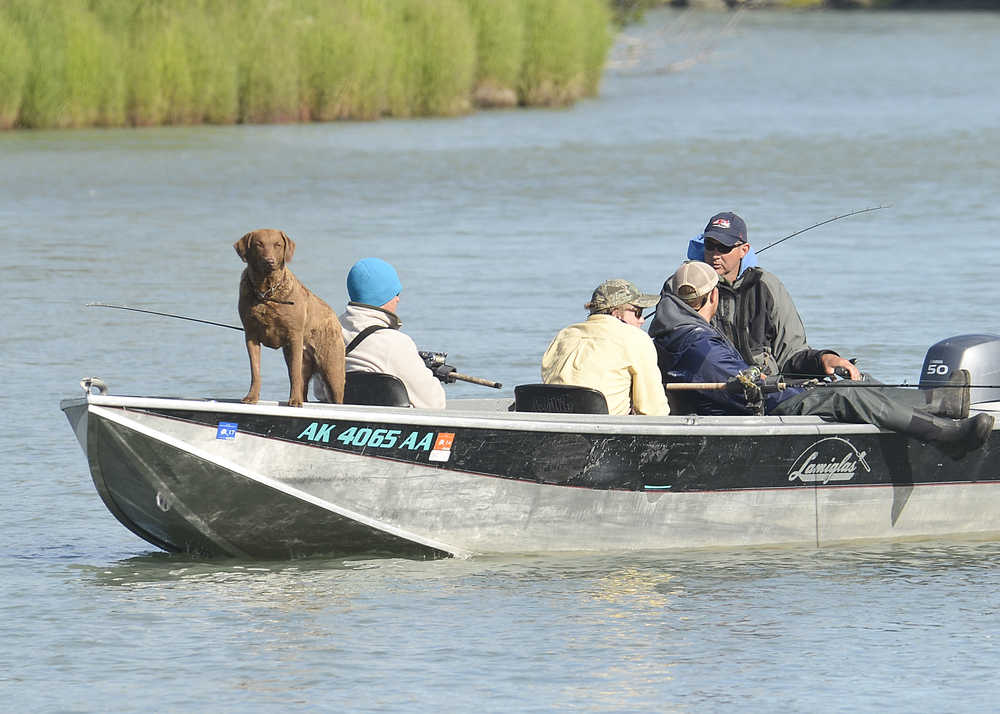The number of guides and guiding businesses in Alaska is staying stable but the percentage of nonresidents is still climbing.
Since the state saw a drop in guide participation in 2009, the numbers have stabilized, according to the 2014 license and logbook data published by the Alaska Department of Fish & Game in January. In 2014, there were 1,805 licensed guides in Alaska and 132 licensed businesses, with 983 holding a combined license. The majority are in the Southcentral region.
Nonresident individual licensed guides overtook resident individual licensed guides for the first time in 2014. Between 2010 and 2014, the number of licensed resident guides fell from 1,009 to 892, while the number of nonresident guides climbed from 702 to 913, according to the report.
However, there are still significantly more residents who hold either combination or guiding businesses licenses than nonresidents. Of the 983 total combination licenses in 2014, 868 went to residents. Of 132 licensed businesses, 105 went to residents, according to the report.
Overall, 63 percent of licensed guides were residents, while 37 percent were not. The percentage of nonresidents has been slowly increasing by about 3 percent every year, climbing from 33 percent in 2012 to 35 percent in 2013.
In Southcentral Alaska, freshwater guiding remains dominant over saltwater guiding. The Southcentral region dominates the freshwater guiding market statewide — 81 percent of freshwater participation occurred in the region in 2014, according to the report.
Sockeye, coho and king salmon were the most common species harvested, comprising 45 percent, 44 percent and 6 percent of the statewide harvest respectively. Out of a total of 95,003 freshwater guided angler-days in Southcentral, 8,123 were spent by residents, and 84,396 were spent by nonresidents. The remainder were compensated, crew or unknown, according to the report.
The demographics of target species for freshwater guided trips are changing, too. With tightened king restrictions for the past several years, guides have had to change tactics to other species. Sockeye and coho are taking an increasingly larger role as target species for all guided trips, while kings are on the decline, according to the harvest data for 2012–2014.
On the Kenai River specifically, the statistics are fairly similar to those statewide: of the 336 total registered guides in 2014, 32 percent were nonresident. That number has also steadily increased over the years, climbing from a 25 percent in 2010 to 33 percent in 2015. The total number of guides continues to fall, though — 2015 saw the fewest guides of any year since 1994, according to the registration records.
The large number of guides on the Kenai River, especially of nonresident guides, has been a concern for some time for Kenai Peninsula locals. The Kenai River Special Management Area advisory board, composed of citizens and state agency representatives, has been discussing for some time whether to limit the number of guides on the river and how it could be done.
At an open house for peninsula guides in November, some complained about the behavior of nonresident guides and asked if the state could charge nonresidents more in the guide registration process.
However, others were more settled with nonresident guides.
Courtesy on the river has improved since the implementation of the Kenai River Guide Academy, a mandatory class for guides on the river, said Mike Fenton, a guide with Fenton Bros. Guided Sportfishing Alaska in Soldotna.
“I don’t see a lot of disparity in the quality of the nonresident guides,” Fenton said. “From a courtesy standpoint, I think all the guides that have gone through the course understand courtesy on the river.”
Nonresident guides do have to pay steeper fees. They should be able to guide in Alaska if they want to, the same way Alaskan guides should be able to guide elsewhere if they choose, said Rod Berg, a co-owner of Rod N’ Real Charters in Soldotna.
“I know some of the public thinks it should be all resident guides, but if I want to go down to Washington or Oregon and guide, that’s my right,” Berg said. “I don’t care about nonresident guides. We have far more pressing issues.”
Reach Elizabeth Earl at elizabeth.earl@peninsulaclarion.com.

